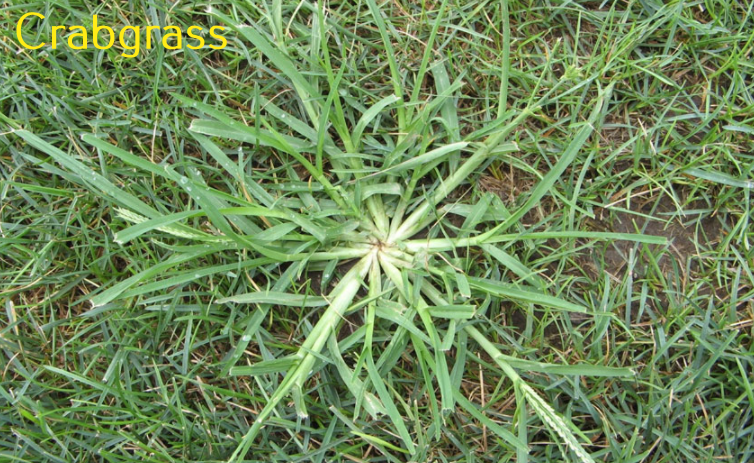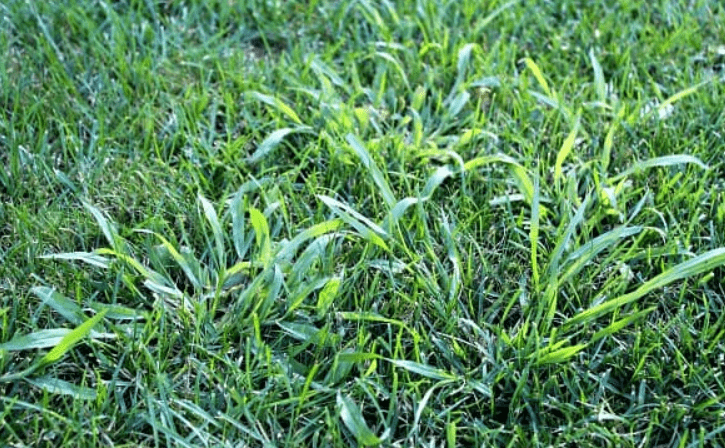Crabgrass is a type of lawn weed that takes the shape of a crab and can be a real problem once it invades your lawn. And because crabgrass is more aggressive than lawn grass, it grows even when the grass goes into dormancy during winter.
The good news is that crabgrass can be controlled easily with the use of readily available crabgrass preventers and homemade weed killers. In the discussion below, we are going to dwell on the different ways of killing crabgrass in and how to prevent its return to the lawn.


How to Get Rid of Crabgrass for Good
As much as crabgrass is a hectic type of weed that so many people struggle with, getting rid of the weed is not as daunting as some want to make it sound and look. Getting rid of crabgrass is easy and simple with the methods;
1. Applying crabgrass herbicide
Crabgrass herbicides contain chemicals Quinclorac and Mesotrione which make it fast and very effective. If you are treating the crabgrass during springtime, consider the use of a pre-emergent herbicide that contains Quinclorac and it will prevent the germination of crabgrass seeds.
If you are killing the weed in summer, consider the use of a post-emergent herbicide to get rid of the weed. And even as you do that, ensure to apply the herbicide close to the plant as much as possible so that you do not end up killing the grass around.
Remove the crabgrass plant with a shovel and seed the bare spot to grow new grass. Crabgrass can easily return or grow back if not uprooted. This is a very hardly weed that can defy even a chemical treatment.
2. Use of baking soda
Another great option of dealing with stressful crabgrass weeds on your lawn is the use of this home remedy. The sodium in the baking soda is phytotoxic and kills any plant it comes into contact with.
Consider the use of powdered baking soda instead of the liquid form; the powdered form is stronger and more effective on most notorious weeds like crabgrass.
To get rid of crabgrass using baking soda, first wet the weeds with some bits of water so that the powder can stick on the leaves. Then apply the powdered baking soda and wait to see the plant die from the leaves, stem, and even the roots.
Do not leave the weed plant on the lawn; pull it out and replace it with healthy grass sod.
3. Use of vinegar
You can use a vinegar solution to kill weeds in your yard. To kill crabgrass with vinegar, mix one cup of white vinegar to an equal portion of water in a spray bottle. Carefully spray the the solution at a close range to avoid harming your lawn grass.
The solution creates a region of higher concentration than the one in the plant, and this sucks up water from the weed plant hence it dries up. After the weed is dead dry, remove it with a shovel and plant some grass seeds in the bare spot.
White diluted vinegar is best because it does not have lasting effects on lawn soil. Other types of chemical herbicides have too much acid that could end up poisoning the lawn soil and hinder the proper growth of grass.
4. Sponge with a roundup
Sponging or spot-treating is an extraordinary concoction procedure for getting rid of crabgrass and other lasting weeds in your lawn. It is not quite the same as splashing since you would prefer not to influence the great grasses in your garden.
With sponging, the glyphosate in Roundup goes underneath and voyages right down the grass weed, killing it to the root. Glyphosate is a non-selective herbicide that will get rid of perpetual weeds and can also harm your lawn grass.
5. Burning the crabgrass
Burning, as a method of getting rid of crabgrass, includes the use of a heat gun, weed burner, or even a blow torch. Exposing the weed plant to extreme temperatures produced by the heat gun kills the cells in the plant thus killing it.
The use of this method is a little dangerous because you risk starting a lawn fire anytime. For safety reasons, it is always advisable to have a water hose on standby so that you can put out the fire in case it starts.
Finish the process by removing the roots of the crabgrass and replacing them with new grass seeds or sod.
6. Applying corn gluten
Although corn gluten meal does not necessarily kill the crabgrass seeds, it is the best organic crabgrass killer. This is because of the high nitrogen content that acts as organic fertilizer for the lawn grass.
But there is no evidence enough to show that corn gluten prevents the germination of crabgrass seeds.
7. Pulling out the crabgrass
The most effective method of getting rid of crabgrass is by pulling it out manually. This is because the method does not involve any use of chemicals nor does it risk the surrounding lawn grass.
To make the process without taking a toll on yourself, consider watering the lawn first so that you can soften the soil. Pulling out weeds when the soils are dry risks interfering with so many grass plants since the weed has fibrous roots that spread far and wide.
FAQ
The following are frequently asked questions about crabgrass and their appropriate answers:
Can I treat crabgrass in the summer?
You can still treat crabgrass in summer but it is not a very good idea. This is because by the time you get to summertime, crabgrass seeds are beginning to germinate and it will be harder to get rid of the many colonies.
The most opportune time to treat the crabgrass on your lawn is in the spring. Around this time, the weed has not produced any seeds yet. This way, you are sure that after you get rid of the crabgrass weed, it will not return since there are no germinating seeds on your lawn.
But for any reason you did not get rid of the weed in spring, use a post-emergent herbicide and pre-emergent herbicide during the summer. Pre-emergent herbicide prevents the seeds from germinating in spring.
When should you kill crabgrass?
Spring is the best time to kill crabgrass because the weather allows it and the weed has not produced any seeds yet. Spring season comes with moderate temperatures and no rainfall that would otherwise wash off the newly applied herbicide.
The herbicide will have enough time to act on the crabgrass and kill it effectively. The only problem with the season is that it is not the best for reseeding and this means you will have to wait until summer kicks in for you to fill the bare spots.
Does crabgrass go away on its own?
Just like any weed, crabgrass too will not go away on its own. You have to make efforts to get rid of this notorious weed. Letting crabgrass thrive alongside your grass makes things worse because it overgrows the grass.
The grass starts turning yellow because it is deprived of the essential nutrients for its proper growth, later it turns brown and eventually dies. By the time it hits you, the whole lawn will have been overtaken by the crabgrass, at a point in which you have to grow a new lawn altogether.
Even treating crabgrass is not enough; you have to remove the plant by the roots, otherwise, the weed will return and stronger this time around.
References:
- University of Massachusetts: Biology and Management of Crabgrass
- Michigan State University: Timing crabgrass preemergence applications in spring
- University of Illinois Extension: How to prevent crabgrass